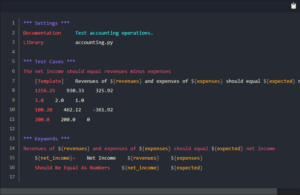Software testing is an ever-evolving field that encompasses many different evaluation methods used to ensure that an application works as it originally intended, and also to ensure that such applications are viable in real-world scenarios. This process usually involves writing appropriate test cases, making sure that the right features and functions are covered, deciding which steps should be performed manually and which should be automated, filling out bug reports, and considering issues that arise during the customer experience.
Below are 7 tips to help any tester make their testing procedures bulletproof.
Tip 1: Make test cases available to the developers prior to coding
Test cases consist of inputs, execution conditions, procedures, and expected results that define a single test to be executed to achieve a specific software testing objective.

Picture 1: Test case example source.
It is important to always inform the developers about the test cases so that they can analyze and get a clear picture of the application being developed, otherwise, there may be discrepancies between the intended purpose of the application and the end result.
Tip 2: Create unit tests
One of the basic steps in testing software is to create unit tests, which are tasks created specifically to ensure that a particular component, be it a method or a class, works as expected and is tested over a set of valid and invalid inputs. This testing method can also be used in continuous integration environments (e.g., projects using AGILE), where unit tests should be run each time a change is committed to the source code repositories, as well as on the development engines used in the project.

Picture 2: A unit test using Robot Framework. It will print both the expected outcome and the actual results. Source.
Tip 3: Software functional testing should be left to the testers
It is the testers’ responsibility to make sure that every piece of software is tested or not. Testers should pay attention to all sorts of small details to ensure that the application does not break somewhere unexpected since programmers can overlook problems in their work as long as the code works. This is especially the case when the application’s requirements are misunderstood by developers, making it difficult to find the underlying problems in the application, no matter how well the code is written. Of course, this does not relieve developers of the responsibility to also thoroughly test the software during the development process. In fact, in small companies, it is common for developers to “put on the tester hat” and change their mindset to have a view like a tester.
Tip 4: Consider “what if” situations during testing
Testers should always consider unexpected scenarios, not included in the testing procedures, that may occur during the performance of such tasks.
For example, how will a power outage affect a database when transactions are being written, and what consequences might this have for the long-term deployment of an application? These “what-if” questions should play a role in the tester’s software research without interfering with existing procedures.
Tip 5: Define an explicit threshold for test clearance criteria
Resources, budget, business priorities, and eventual delays in production, among others, are factors that should be considered when developing an application, and all stakeholders should recognize the limits of the project scope. The tester’s role is often to mitigate, not necessarily eliminate, risks that arise. Applications don’t have to be perfect, but testing shouldn’t compromise overall quality by ignoring critical errors that could lead to unavoidable risks. So it’s the tester’s job to define an acceptable threshold to ensure quality.
Tip 6: Group test cases for Regression testing
An important step in software testing is Regression testing. This method consists in verifying the impact on an application when a new update or change is introduced and making sure that these changes don’t compromise the integrity of the application. Usually, test cases are generated automatically, as they are required to be run multiple times depending on the changes made. It has proven beneficial to organize test cases that relate to similar functionalities into small groups, as this allows testers to test software clusters more efficiently without having to go back and forth between application functionalities much.
Tip 7: Write a complete Bug Report
A thorough bug report at the end of the test procedure is as important as the test itself. Good bug reports should include an exact number assigned to each of the bugs encountered during testing to make it easier to find a specific bug; the identified bugs should also be reproducible, otherwise, developers won’t be able to find the problem. In addition, each bug report should be concise and contain only the necessary amount of information about the particular bug. Testers should also provide information about the priority of each bug, the platform on which it occurred, and the expected outcome of the test compared to the results caused by the bug.

These are just some of the most common practices that help us, the testers, deliver the best possible version of the software.














